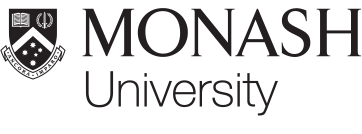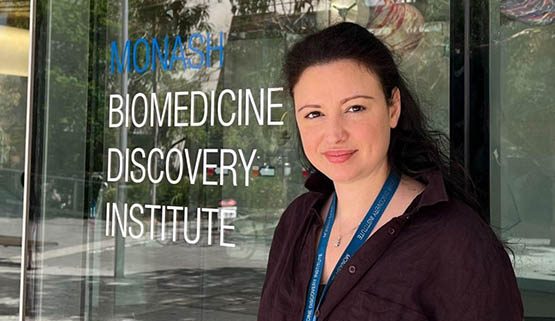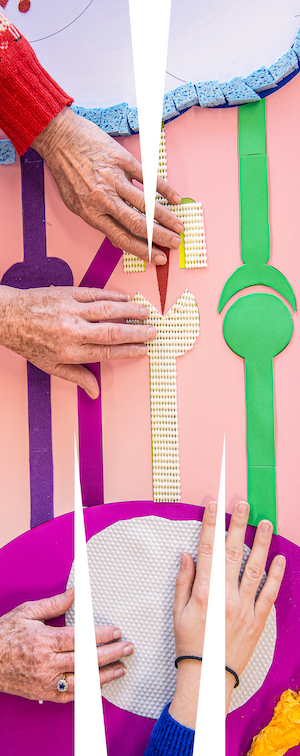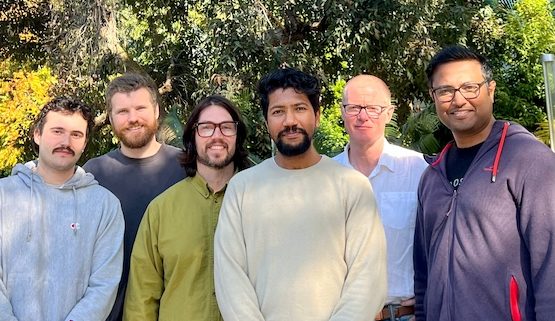Congrats Camilla on your co-1st author Cell paper
Ancient gene offers new clue to disease susceptibility for First Nations people
A world-first discovery has identified a previously unknown gene variant influencing first-line immune defences in First Nations people – who are at higher risk of severe respiratory viral diseases – and offers insights for improved disease prevention strategies.
An international team of researchers, co-led by Monash University and the Peter Doherty Institute for Infection and Immunity (Doherty Institute), has gained new understanding of the immunity of First Nations people across Oceania, which includes Australasia, Melanesia, Micronesia and Polynesia.
Published in Cell today, the eight-year project was the first of its kind to comprehensively map a component of the first line immune defences, termed natural killer cells, in Oceania’s First Nations populations, including First Nations Australians.
Natural killer cells are part of the body’s first line of defence against pathogens, which can restrict viruses from replicating in the earliest stages of infection. This is crucial because they can either eliminate low level infection completely or buy time for the generation of virus-specific immunity. Consequently, these immune cells play a key role in an individual’s ability to both prevent infection and recover from a virus.
First Nations people globally, including Aboriginal and Torres Strait Islander people, are at high risk of severe respiratory viral diseases, including COVID-19, pandemic influenza and seasonal influenza. In addition to social determinants of health, genetic variations within immune cells may contribute to the increased risk.
In partnership with Menzies School of Health Research (Northern Territory), the University of Colorado and Stanford University, the researchers evaluated natural killer cells in First Nations people, conducting in-depth genomic and molecular analyses at the Stanford University genomic facility and the Australian Synchrotron.
Dr Camilla Faoro, co-first author of the study from Monash University’s Biomedicine Discovery Institute, used the Australian Synchrotron to provide detailed structural insights into the impact of killer cell immunoglobulin-like receptors found in First Nations Peoples at the molecular level.
“We have shown how the Indigenous and Māori forms of KIR3DL1 interact with the most common HLA molecules in Oceania, which explains why they bind more tightly than the KIR3DL1 forms predominant in other parts of the world,” Dr Faoro said. “This tighter binding changes the capacity of natural killer cells to sense and respond to infection.”

The University of Melbourne’s Professor Katherine Kedzierska, Head of the Human T Cell Laboratory at the Doherty Institute and co-senior author of the paper, has been co-leading the research since 2016.
“Natural killer cells, a type of white blood cell, are key in mediating early immune control against a broad range of viruses,” Professor Kedzierska said. “We focused our research on the origin, distribution and functions of killer cell immunoglobulin-like receptors in First Nations people, as these receptors are crucial components that direct immune responses following viral infections.”
Specifically, the study examined a highly variable natural killer cell receptor, called KIR3DL1, of which there are over 200 forms in humans, capable of binding to subsets of a person’s human leukocyte antigens (HLA) molecules, which present viral peptides for recognition by immune cells, and are themselves highly variable.
Professor Kedzierska said that, critically, the team identified an ancient variant of the natural killer receptor that appears to be exclusive to the people of Oceania, binding more strongly to the HLA variants that are common to Oceanic peoples.
“Our analyses of over 1,300 individuals revealed that the frequency of this Oceanic variant was as high as 28 per cent among highland Papuans and around six per cent in First Nations people from Northern Australia, which could influence susceptibility to infection,” she said.
She noted that genetic and immunological studies often do not involve First Nations and other minority populations around the world.
“Recent studies including this one, underscore the importance of inclusively working with First Nations peoples. Our learnings may inform the design of new vaccines or vaccine regimens and immunotherapies, helping to ensure these agents are effective for the broad sweep of human populations,” she said.
The University of Melbourne’s Professor Andrew Brooks, Head of the Natural Killer Cell Laboratory at the Doherty Institute and a co-senior author of the paper, said the extent to which natural killer cells can respond to viral infections and cancer is dictated by these genes, which are among the most variable in the human genome.
“At a global level, genetic differences contribute to population-specific immune variation, so gaining insights into these differences is important for both addressing and reducing disparities in health outcomes,” Professor Brooks said.
“An understanding of this diversity is key not only to explain why responses to viral infections differ from person to person, but it may also allow us to identify individuals and/or populations at higher risk of severe disease.”
Additional information:
- Peer review: Norman, PJ, et al. An archaic HLA class I receptor allele diversifies natural-killer-cell-driven immunity in First Nations peoples of Oceania. Cell (2024). DOI: 10.1016/j.cell.2024.10.005
- Funding: This study was supported by the Australian Research Council and NHMRC.
- Collaboration: This study was led by Katherine Kedzierska, Steven Tong, Andrew Brooks, Jamie Rossjohn and Paul Norman, in collaboration with Monash University, Menzies School of Health Research, University of Colorado and Stanford University.
Media contacts
Cheryl Critchley
Media and Communications Manager, Monash University
P +61 (0) 477 571 442
E cheryl.critchley@monash.edu
Aline Riche
Senior Communications and Media Officer, Doherty Institute
P +61 (0) 403 204 336
E Doherty-media@unimelb.edu.au



 We are delighted to be part of the Coeliac Australia’s Gluten-Free Expo! We are autoimmune disease researchers, especially coeliac disease. We have created artworks, tactile models, and multisensory science books containing audio visualisation of cellular activity for blind, low vision and diverse communities. Come and see us at the Health Hub where you’ll be guided through a tactile journey from gluten to the development and pathology of coeliac disease.
We are delighted to be part of the Coeliac Australia’s Gluten-Free Expo! We are autoimmune disease researchers, especially coeliac disease. We have created artworks, tactile models, and multisensory science books containing audio visualisation of cellular activity for blind, low vision and diverse communities. Come and see us at the Health Hub where you’ll be guided through a tactile journey from gluten to the development and pathology of coeliac disease. 





